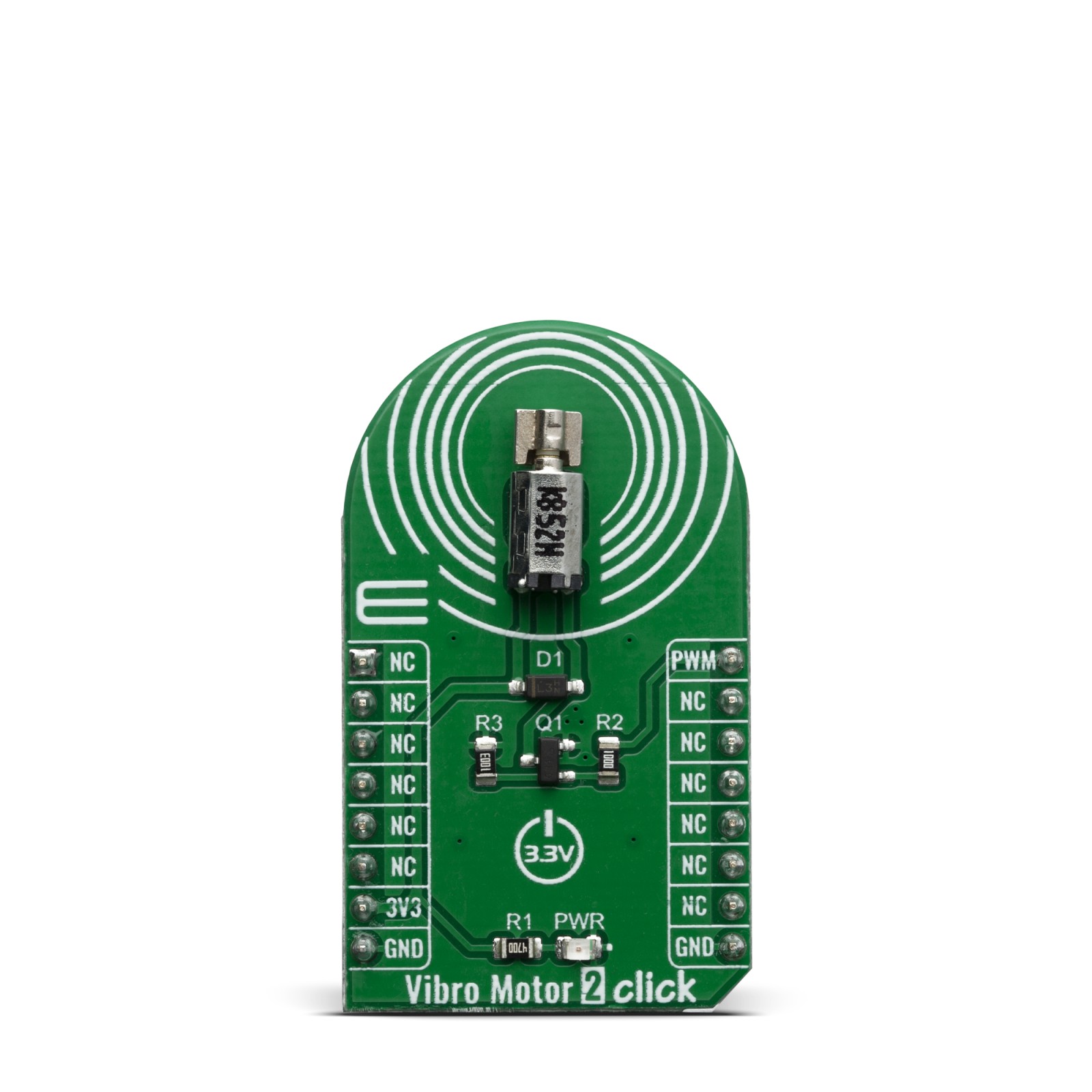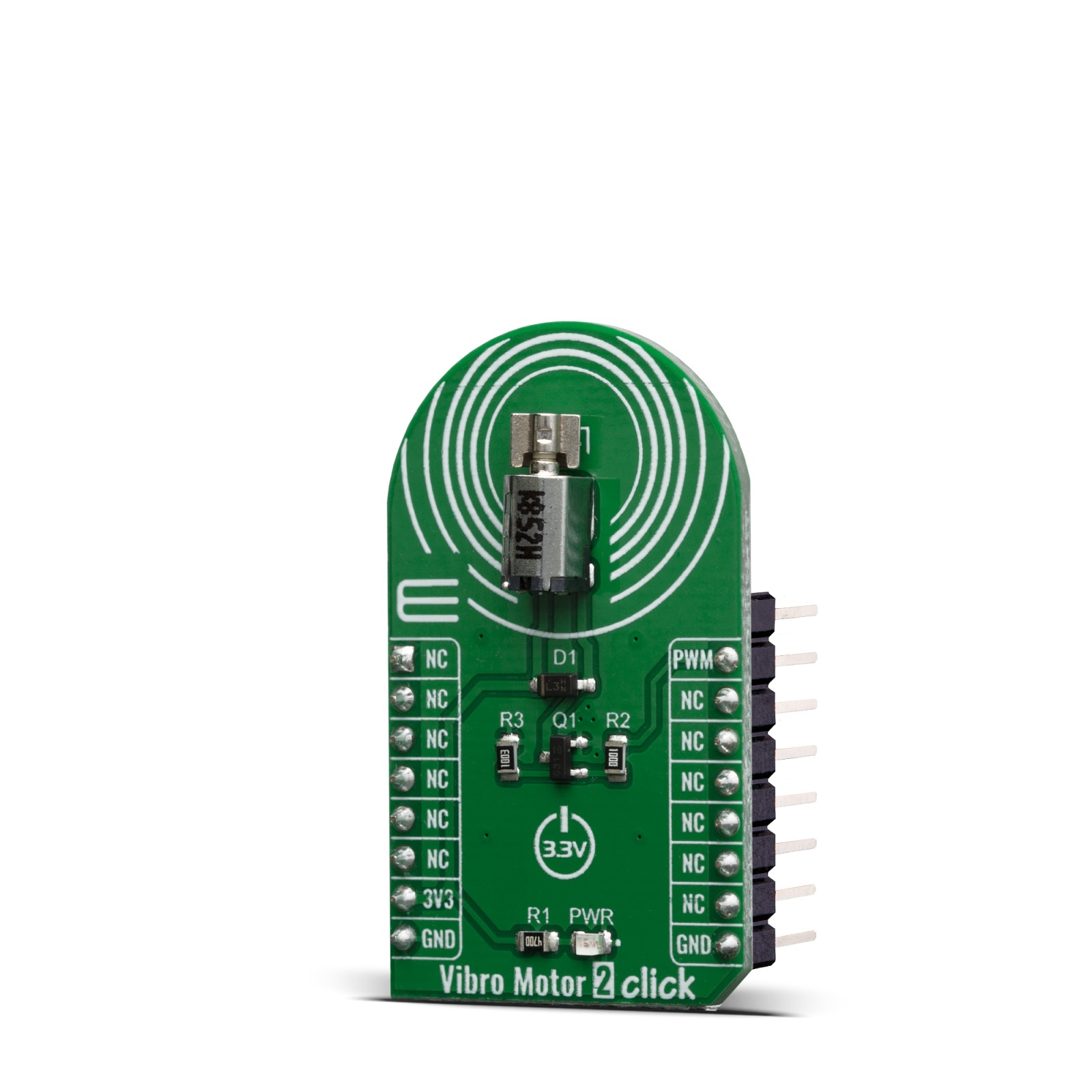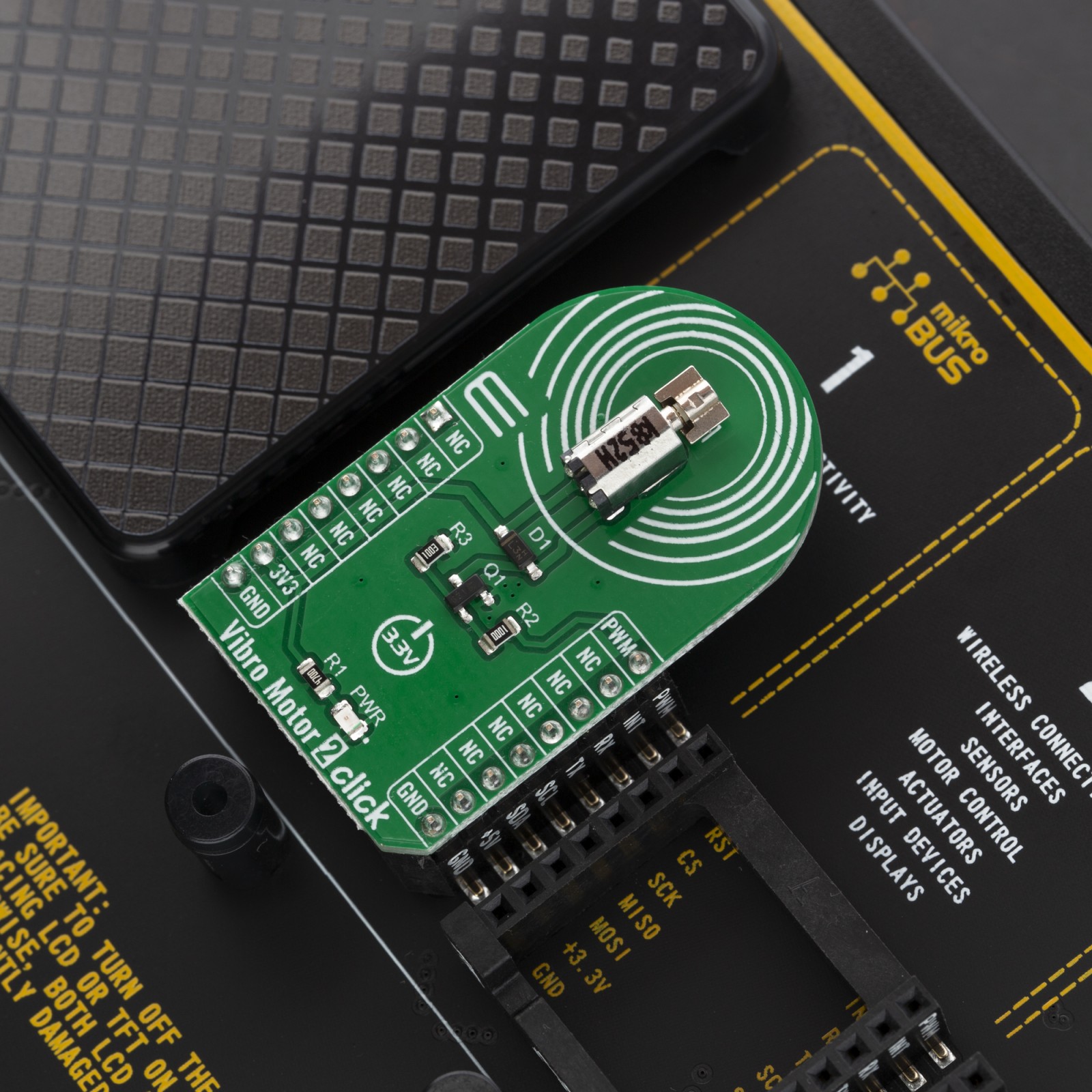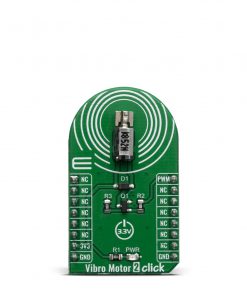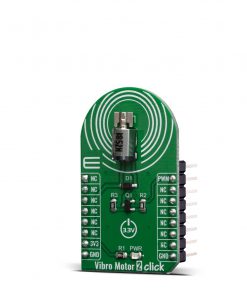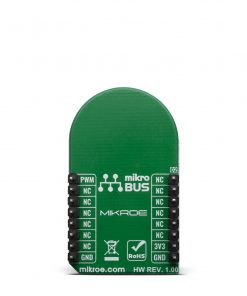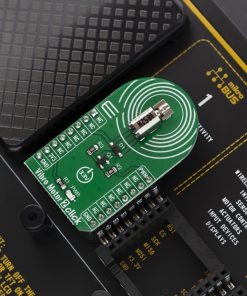Vibro Motor 2 Click
R260.00 ex. VAT
Vibro Motor 2 Click is a compact add-on board that makes an ideal solution for adding simple haptic feedback in any design. This board features the VZ43FC1B5640007L, a compact Eccentric Rotating Mass (ERM) motor that generates vibration/haptic feedback from Vybronics, alongside a DMG3420U N-channel MOSFET to drive the ERM motor, since the MCU itself cannot provide enough power for the motor driving. It draws a maximum of 100mA while producing the highest G force/vibration energy of 0.91G. This Click board™ makes an excellent choice for many small handheld devices and for users who require crisp haptic feedback and low power consumption.
Vibro Motor 2 Click is supported by a mikroSDK compliant library, which includes functions that simplify software development. This Click board™ comes as a fully tested product, ready to be used on a system equipped with the mikroBUS™ socket.
Stock: Lead-time applicable.
| 5+ | R247.00 |
| 10+ | R234.00 |
| 15+ | R221.00 |
| 20+ | R212.68 |

